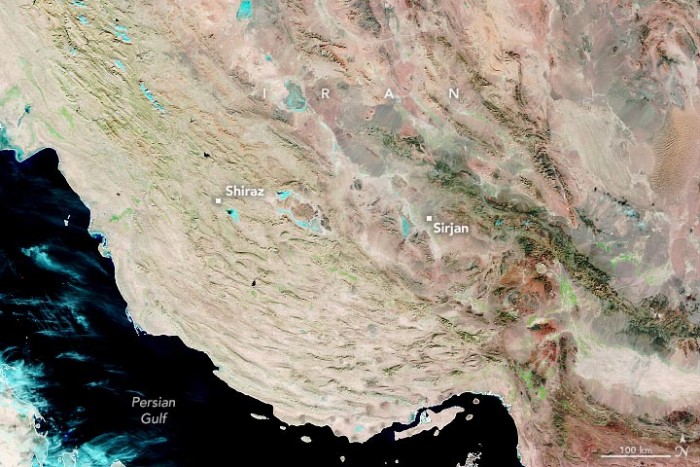After months of severe drought, a sudden heavy rain is causing problems in Iran. For much of 2021, drought swept through southern Iran, drying up crops, drying up wells and fueling protests over water scarcity. The first week of 2022 brought the opposite problem — successive torrential rains flooded rivers and triggered widespread flooding.

December 14, 2021
January 7, 2022
A medium-resolution imaging spectrometer (MODIS) on NASA's Aqua satellite took images of floods in southern Iran on January 7, 2022. For comparison, the second image shows the same area on December 14, 2021 (before the storm hit). The images are false-color, using a combination of visible light and short-wave infrared light (band 7-2-1), making it easier to distinguish between land and water. Arid land is shown brown; areas with vegetation are green. Areas covered by water are dark blue.
News and social media reports showed devastating floods that washed away bridges, washed away cars and flooded homes and farmland. According to the Iranian Red Crescent Society, the floods have killed at least 10 people and damaged hundreds of homes and a large number of vehicles.
However, the recent torrential rains will not necessarily end Iran's drought or water challenges immediately. While storms can replenish water on the surface, it takes a sustained period of wet weather to replenish groundwater, and many people in the area rely on groundwater for irrigation. According to GRACE, data collected by the Gravity Recovery and Subsequent Climate Experiment (GRACE-FO) satellite shows that on January 10, 2021, shallow groundwater reserves in the region's aquifer improved, but remained low in some parts of southern Iran. GRACE-FO) data was released by the University of Nebraska.